Tallahassee, FL Pollen and Allergy Report for Summer 2023
Pollen Allergy Trends in Tallahassee, FL
When is pollen lowest in Tallahassee, FL?

May
Lowest month total PPM
Avg. PPM
When is pollen highest in Tallahassee, FL?

April
Highest month total PPM
Avg. PPM
How does pollen in Tallahassee, FL compare to Florida?
Tallahassee has a higher average PPM than the state of Florida.
Tallahassee yearly avg PPM:
Florida yearly avg PPM:
How does pollen in Tallahassee, FL compare to the USA?
Tallahassee has a higher average PPM than the USA.
Tallahassee yearly avg PPM:
USA yearly avg PPM:
Is pollen worse this year in Tallahassee, FL?
Spring 2023 was better than spring 2022.
Spring 2023 PPM:
Spring 2022 PPM:
Average PPM in Tallahassee, FL
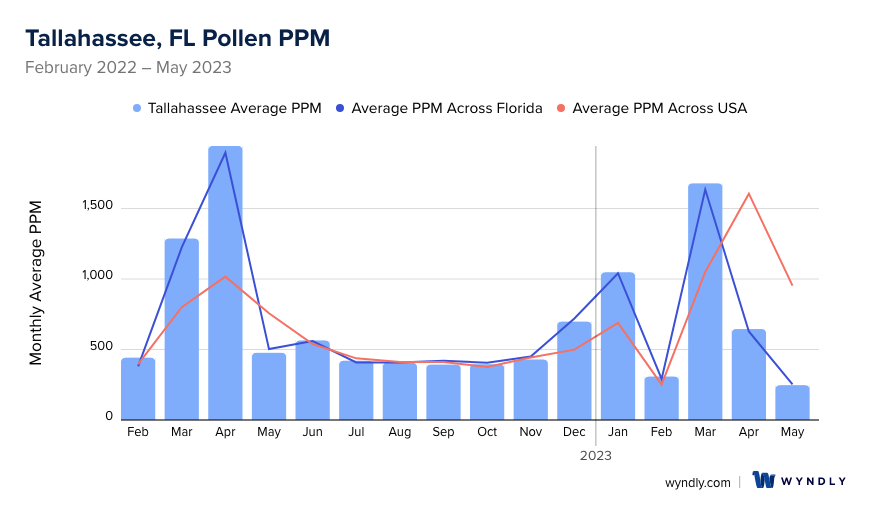
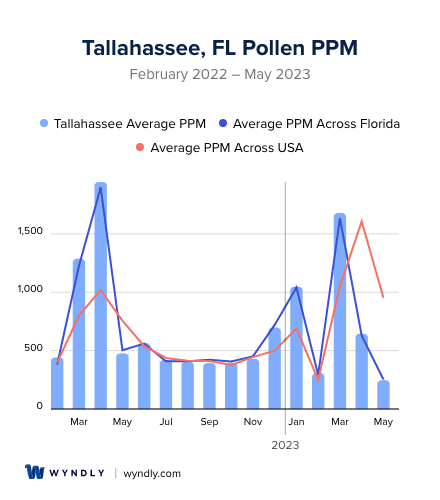
Tallahassee, FL Pollen and Allergy Breakdown by Month
Grass
When is grass pollen highest in Tallahassee, FL?
April has the highest grass pollen in Tallahassee, FL with an average PPM of
When is grass pollen lowest in Tallahassee, FL?
December has the lowest grass pollen in Tallahassee, FL with an average PPM of
Tree
When is tree pollen highest in Tallahassee, FL?
March has the highest tree pollen in Tallahassee, FL with an average PPM of
When is tree pollen lowest in Tallahassee, FL?
September has the lowest tree pollen in Tallahassee, FL with an average PPM of
Weed
When is weed pollen highest in Tallahassee, FL?
June has the highest weed pollen in Tallahassee, FL with an average PPM of
When is weed pollen lowest in Tallahassee, FL?
February has the lowest weed pollen in Tallahassee, FL with an average PPM of
Tallahassee, FL Pollen Monthly Breakdown by Pollen Type
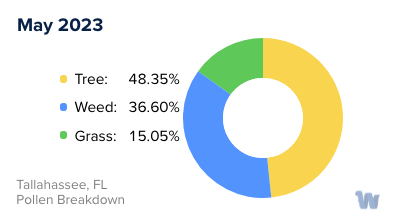
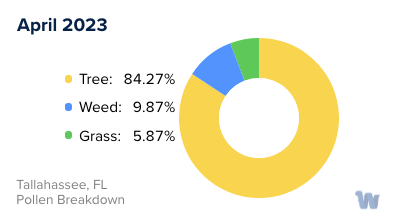
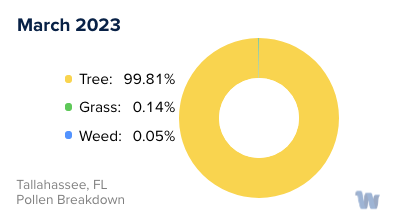
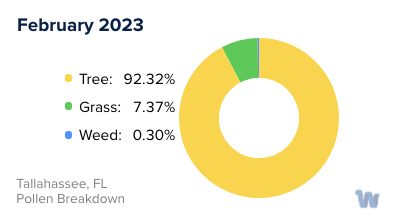
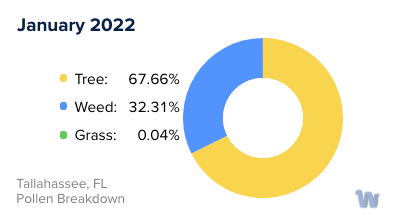
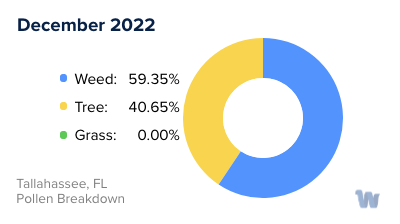
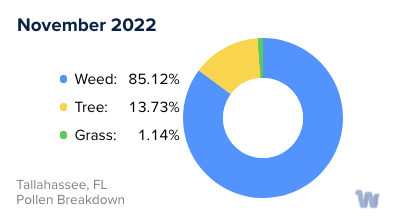
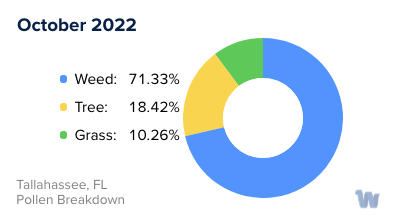
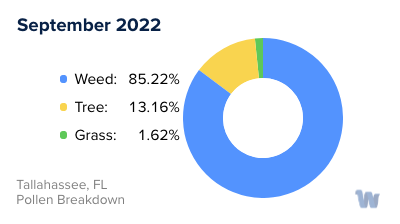
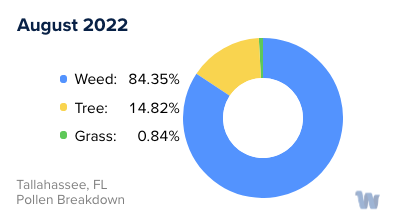
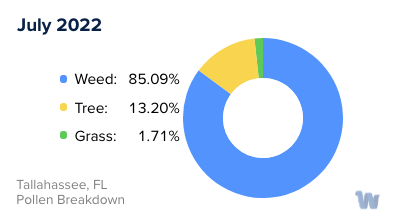
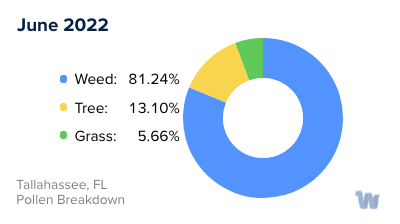
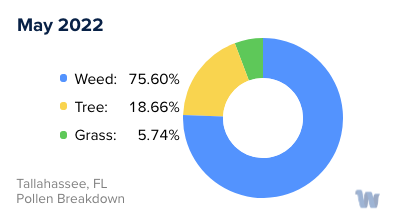
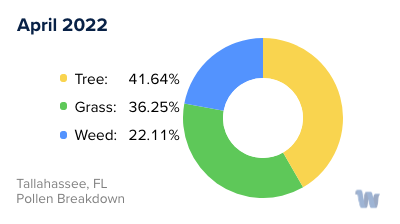
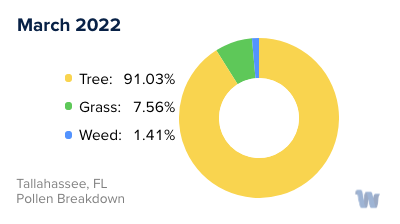
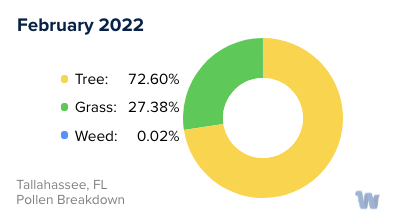
Pollen and Hay Fever in Tallahassee, FL
In the charming city of Tallahassee, Florida, pollen allergies and hay fever are common concerns among residents and visitors alike. This picturesque capital city is surrounded by lush greenery and a variety of plants that, while beautiful, can contribute to seasonal allergies.
During the spring, Tallahassee experiences an influx of tree pollen. Oak, pine, and cedar trees are some of the prominent producers. These trees release copious amounts of pollen into the air, which can easily be inhaled, causing symptoms such as sneezing, runny nose, and itchy eyes.
As the season transitions into summer, grass pollen takes center stage. Bermuda, Bahia, and Timothy grasses are prevalent in Tallahassee. These grasses have lightweight pollen that can travel for miles, affecting a large population. People with sensitivities to grass pollen might find their allergies escalating during the early to mid-summer months.
In late summer and early fall, weed pollen becomes more prevalent. The most common culprits in Tallahassee are ragweed and sagebrush. These weeds thrive in the city's humid climate and release pollen that can aggravate allergy symptoms.
It's important to understand that pollen counts can be influenced by weather conditions. On windy days, pollen can be carried for greater distances, while rain tends to wash pollen out of the air. Additionally, Tallahassee's humidity can cause pollen to become sticky, making it more likely to adhere to clothing and skin.
Being mindful of the types of pollen and their respective seasons can help residents and visitors in Tallahassee plan outdoor activities accordingly. While the city's flora contributes to its beauty, it’s essential to be aware of pollen allergies and hay fever to make the most of your time in this enchanting locale.

